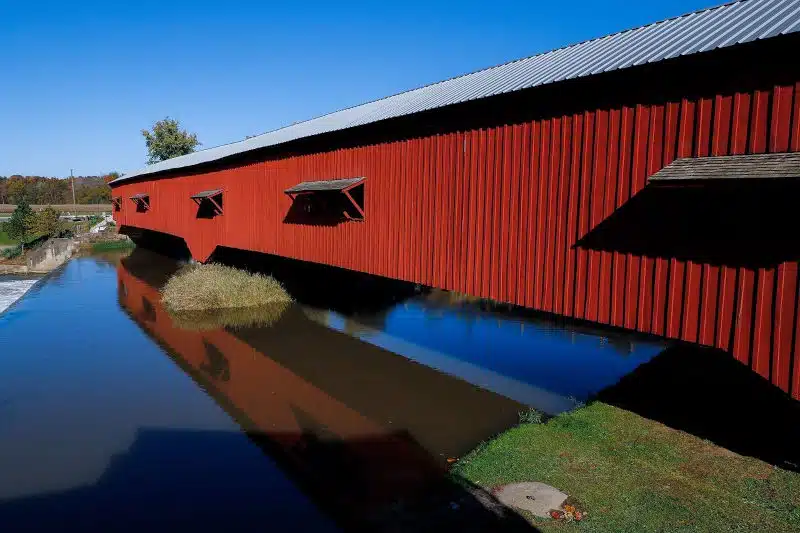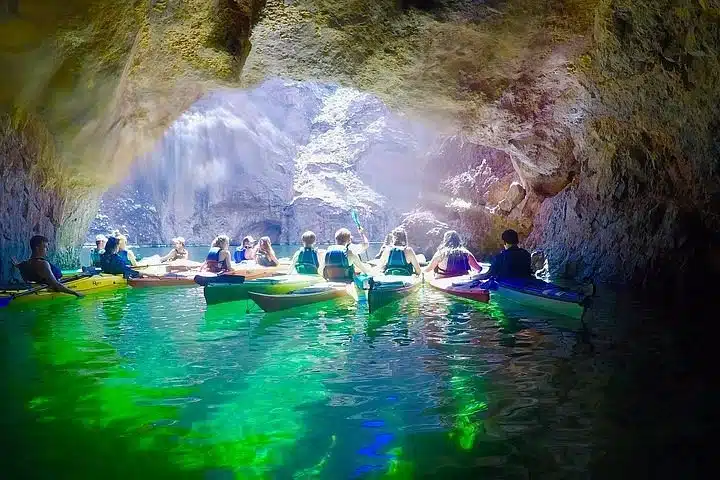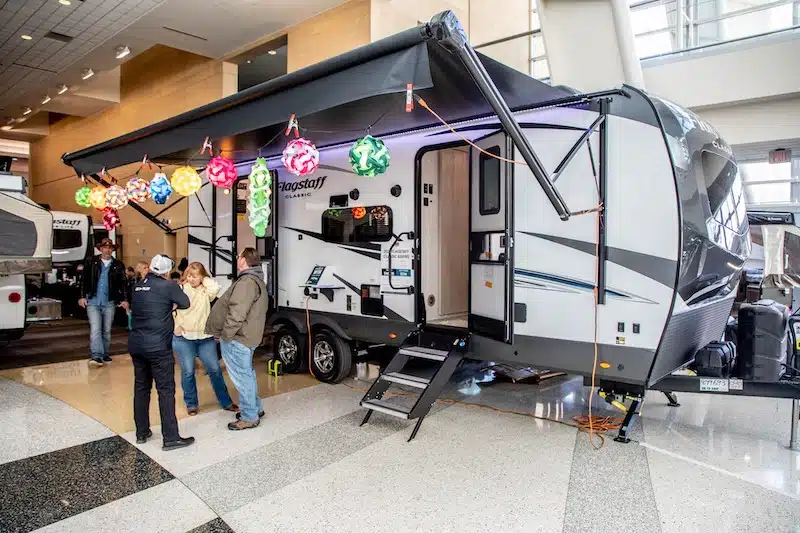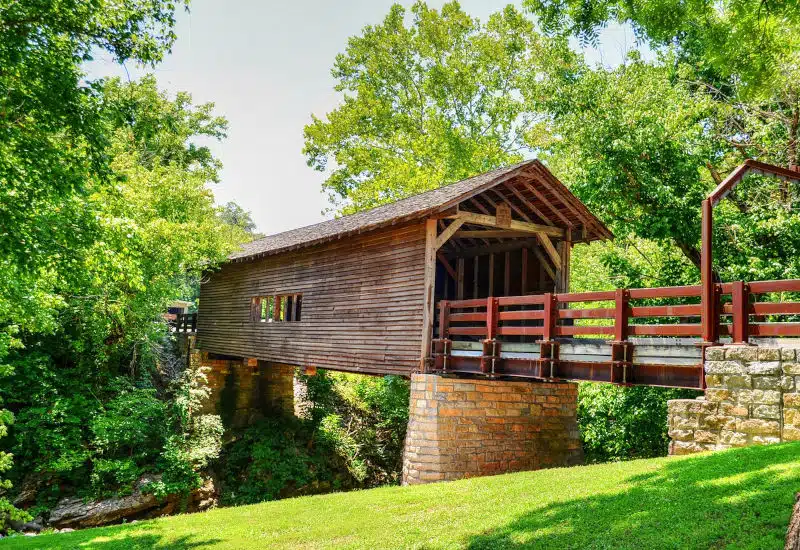The Midwestern United States holds a rich collection of covered bridges, iconic symbols of Americana that link the present to the past. Spanning from Ohio’s lush valleys to the rolling hills of Indiana, these structures are a testament to the region’s history and architectural ingenuity.
In the Buckeye State of Ohio, you’ll find numerous examples of these historic structures, including the charming Rock Mill Covered Bridge near Lancaster and the Ashtabula County’s Smolen-Gulf Covered Bridge, the longest in the country. Indiana, often referred to as the “Covered Bridge Capital of the World,” boasts a notable collection of these structures, such as the Medora Covered Bridge near Medora, the longest historic covered bridge in the U.S., and the Bridgeton Covered Bridge, a centerpiece of Parke County’s covered bridge festival.
Traveling further west, you can discover the Imes Bridge in St. Charles, Iowa, part of the famed Bridges of Madison County, and the picturesque Zumbrota Covered Bridge in Zumbrota, Minnesota. Whether you’re a history enthusiast, architecture admirer, or a lover of scenic drives, the covered bridges in the Midwest offer a unique blend of history, beauty, and regional character.
Captivating Covered Bridges of the Midwest
The Midwest is home to a variety of captivating covered bridges, from the iconic structures of Kentucky to the scenic spans of Ohio and the rustic crossings of Indiana. As you journey through this region, you’ll find yourself enamored with the charm and beauty of these historic bridges, each with its own unique story to tell.
So pack a picnic, grab your camera, and set out to explore the captivating covered bridges of the Midwest.
This guide is part of our Covered Bridges of America series, we have broken down the bridges by region and state, click the region link below for full details and photo’s of each bridge.
- Explore the Most Beautiful Covered Bridges of the USA
- 30 Beautiful Covered Bridges in America’s Southern States
- 29 Historic Covered Bridges in America’s NorthEast
- 20 Historic Covered Bridges on America’s West Coast
Ohio’s Beautiful Covered Bridges
Ohio is home to some of the most picturesque covered bridges in the country. Among them are the Smolen Gulf Bridge, the longest covered bridge in the United States at over 613 feet, and the West Liberty Covered Bridge, the world’s shortest covered bridge at just over 18 feet. Other notable bridges include the Harpersfield Covered Bridge, the Bridge of Dreams, and the State Road Covered Bridge.
When visiting these scenic spans, be sure to take the time to appreciate their history, architectural beauty, and the natural surroundings that make them such a beloved part of Ohio’s landscape.
1. Rock Mill Covered Bridge
- The Rock Mill Covered Bridge is situated in Fairfield County, near the towns of Lancaster and Carroll. It offers a picturesque setting, surrounded by the tranquil landscapes of central Ohio.
- This 37-foot bridge showcases a kingpost truss design. Built from heavy timber and featuring a barn-red exterior, it provides a striking view against the backdrop of the historic Rock Mill.
- Originally constructed in 1901, the bridge served as an essential link for the Rock Mill community. It was restored in 2004 to preserve its historic charm and continues to be an integral part of the local heritage.
2. Harpersfield Covered Bridge
- Located in Ashtabula County, the Harpersfield Covered Bridge is near the town of Geneva. Nestled over the Grand River, it offers a serene getaway in northeastern Ohio.
- Spanning 228 feet, the bridge features a Howe truss design. Constructed from sturdy timber and adorned with a charming white exterior, it stands as a delightful sight amidst its natural surroundings.
- Built in 1868, the bridge is one of the longest historic covered bridges in Ohio. Despite being partially destroyed by a flood in 1913, it was extended with a steel span and continues to be a cherished local landmark.
3. Lockville Covered Bridge
- The Lockville Covered Bridge is situated in Fairfield County, close to the towns of Canal Winchester and Carroll. Set in the tranquil Lockville Park, it provides a peaceful spot for visitors.
- This 36-foot bridge showcases a queenpost truss design. Constructed from timber and featuring a weathered natural finish, it offers a rustic charm in a serene park setting.
- Originally built in 1888, the bridge was moved from Perry County to its current location in 1967. It stands as a testimony to the engineering skills of the past and continues to be a beloved local landmark.
4. Mohican State Park Covered Bridge
- Mohican State Park Covered Bridge is located in Ashland County, near the town of Loudonville. Nestled within the scenic park, it offers a tranquil location amidst Ohio’s natural beauty.
- This 80-foot bridge showcases a kingpost truss design. Constructed primarily from wood and featuring a vivid red exterior, it adds a beautiful contrast to the lush greenery of the park.
- Built in 1963, the bridge is a key feature of Mohican State Park. It provides access over the Clear Fork of the Mohican River and stands as a cherished symbol of Ohio’s park system.
5. Knowlton Covered Bridge
- The Knowlton Covered Bridge is situated in Monroe County, near the town of Woodsfield. Set amidst the rolling hills of southeastern Ohio, it offers a serene, picturesque setting.
- Spanning 192 feet, the bridge features a Smith truss design. It’s constructed from heavy timber and painted a rustic red hue, providing a captivating sight against its rural backdrop.
- Constructed in 1887, the bridge served as a crucial passage over the Little Muskingum River. Despite several renovations, it retains its historic charm and continues to be a treasured local icon.
6. Root Covered Bridge
- Root Covered Bridge is located in Ashtabula County, close to the towns of Jefferson and Ashtabula. Set amidst the idyllic landscapes of northeastern Ohio, it offers a picturesque view.
- This 114-foot bridge showcases a Town lattice truss design. Constructed primarily from wood and featuring a charming barn-red exterior, it presents a delightful sight over the Ashtabula River.
- Built in 1868, the bridge was an essential part of local transportation for over a century. Today, it stands as a preserved testament to Ohio’s rich transportation history and rural heritage.
7. Belleview Park Covered Bridge
- The Belleview Park Covered Bridge is situated in Jefferson County, near the city of Steubenville. Located in the park, it provides a peaceful retreat within an urban setting.
- This 60-foot bridge features a kingpost truss design. Constructed from timber and featuring a vibrant red exterior, it adds a splash of color to the verdant park surroundings.
- Constructed in the 19th century, the bridge was relocated from Belmont County to its current location in 1967. It stands as a cherished feature of Belleview Park and a symbol of Ohio’s rich architectural heritage.
8. Middle Road Covered Bridge
- Middle Road Covered Bridge is located in Ashtabula County, near the towns of Conneaut and Ashtabula. Set in the picturesque countryside, it offers a peaceful setting.
- This 136-foot bridge showcases a Howe truss design. Constructed predominantly from wood and featuring a rustic exterior, it blends seamlessly with the surrounding rural beauty.
- Constructed in 1868, the bridge was an important link in the local transportation network, providing access over Conneaut Creek. Today, it stands as a preserved part of Ohio’s rich history and architectural heritage.
9. Swartz Covered Bridge
- Swartz Covered Bridge is situated in Wyandot County, near the towns of Upper Sandusky and Carey. Set amidst the serene landscapes of central Ohio, it provides a tranquil retreat.
- This 100-foot bridge features a Smith truss design. Constructed from heavy timber and featuring a weathered natural finish, it offers a rustic charm against the serene countryside.
- Originally built in 1878, the bridge served as a crucial link over the Sandusky River. Despite several renovations, it continues to be a cherished local landmark and a testament to Ohio’s historic past.
10. Hune Covered Bridge
- Hune Covered Bridge is located in Washington County, near the town of Marietta. It offers a peaceful location amidst the scenic landscapes of southeastern Ohio.
- Spanning 128 feet, this bridge showcases a Long truss design. Built primarily from wood and featuring a barn-red exterior, it adds a beautiful contrast to the surrounding greenery.
- Constructed in 1879, the bridge provided an essential passage over the Little Muskingum River. It stands as a historic icon, symbolizing the rich heritage and rural charm of the region.
Indiana’s Rustic Covered Bridges
In Indiana, Parke County holds the distinction of having the highest number of covered bridges in the nation, with a total of 31. These rustic crossings, characterized by their traditional wooden truss design, are a testament to the skill and perseverance of the builders who constructed them.
As you explore the covered bridges of Indiana, take a moment to appreciate the craftsmanship and history that make these structures such a cherished part of the state’s heritage.
11. Medora Covered Bridge
- Located in Jackson County, near the small town of Medora, the Medora Covered Bridge offers a scenic view over the East Fork of the White River.
- This is the longest historic covered bridge in the United States, spanning a remarkable 434 feet. The bridge showcases a Burr arch truss design. Constructed primarily from timber, it features a rustic weathered exterior that blends perfectly with the surrounding landscape.
- Built in 1875, the bridge served as a crucial link for local transportation. Despite no longer being in use, it has been well-preserved and stands as a remarkable testament to Indiana’s historic past.
12. Williams Covered Bridge
- The Williams Covered Bridge is located in Lawrence County, close to the towns of Williams and Bedford. This tranquil bridge is situated near the Hoosier National Forest.
- Spanning 373 feet, this bridge features a Howe truss design. It is constructed from timber and features a vibrant red exterior, standing out beautifully against the lush greenery of its surroundings.
- The bridge was constructed in 1884 and served as an essential link over the East Fork of the White River. It’s a cherished local landmark and an enduring symbol of Indiana’s rich architectural heritage.
13. Bridgeton Covered Bridge
- The Bridgeton Covered Bridge is located in Parke County, close to the town of Rockville. This bridge is one of the most iconic covered bridges in the state.
- Spanning 267 feet, this bridge features a Burr arch truss design. Made from timber and featuring a vivid red exterior, it provides a beautiful contrast to the surrounding scenery.
- The original bridge was built in 1868 and was sadly destroyed by arson in 2005. However, a replica was quickly constructed and now stands as a testament to the community’s resilience and the bridge’s significance to local history.
14. Moscow Covered Bridge
- The Moscow Covered Bridge is located in Rush County, near the small community of Moscow. This bridge is nestled over Big Flatrock River.
- This 334-foot bridge showcases a Howe truss design. It’s constructed from heavy timber and painted a striking red hue, providing a picturesque sight amidst its natural setting.
- Constructed in 1886, the bridge was destroyed by a tornado in 2008 but was later reconstructed, preserving its historic charm and significance to the local community.
15. Mill Creek Bridge
- The Mill Creek Bridge is located in Parke County, near the town of Montezuma. It offers a tranquil retreat in the scenic landscapes of western Indiana.
- Spanning 207 feet, this bridge features a Burr arch truss design. Constructed from timber and featuring a rustic red exterior, it presents a delightful sight over Mill Creek.
- The bridge was built in 1907, replacing a previous bridge destroyed by a flood. It stands as a cherished local landmark, reflecting the historic charm and rural heritage of Indiana.
16. Cataract Falls Covered Bridge
- Cataract Falls Covered Bridge is situated in Owen County, near the town of Spencer. Located within Lieber State Recreation Area, it offers a scenic view over Mill Creek.
- This 148-foot bridge showcases a Smith truss design. Constructed predominantly from timber and featuring a charming white exterior, it adds a stunning contrast to the lush greenery of the park.
- Built in 1876, the bridge served as a vital link over Eel River. Today, it’s a cherished feature of the recreation area, symbolizing Indiana’s rich historical and architectural heritage.
17. Cornstalk Covered Bridge
- Cornstalk Covered Bridge is located in Shelby County, close to the town of Shelbyville. Set amidst idyllic farmland, it offers a peaceful rural setting.
- Spanning 113 feet, this bridge features a Smith truss design. Constructed mainly from wood and featuring a traditional red exterior, it provides a picturesque view against its rural backdrop.
- Built in 1885, the bridge served as an essential passage over Little Blue River. It remains a valued local landmark and a symbol of the region’s rural heritage.
18. Smith Covered Bridge
- The Smith Covered Bridge is situated in Parke County, close to the towns of Tangier and Montezuma. Set in the scenic landscapes of western Indiana, it offers a tranquil setting.
- Spanning 150 feet, the bridge showcases a Burr arch truss design. Constructed from sturdy timber and featuring a vibrant red exterior, it provides a captivating sight over Sugar Creek.
- Constructed in 1902, the bridge served as a crucial passage for local transportation. It stands as a treasured local icon, symbolizing the rich heritage of Indiana’s covered bridges.
19. New Brownsville Covered Bridge
- New Brownsville Covered Bridge is located in Bartholomew County, near the town of Columbus. Set amidst the serene landscapes of southern Indiana, it offers a picturesque view.
- Spanning 102 feet, this bridge features a Howe truss design. Made from timber and featuring a barn-red exterior, it adds a beautiful contrast to the surrounding greenery.
- Built in 1840, the bridge served as an essential link over Driftwood River. Despite several renovations, it maintains its historical charm and continues to be a key landmark in the region.
20. Sims Covered Bridge
- Sims Covered Bridge is situated in Parke County, close to the town of Rockville. Located over Bill Diddle Creek, it offers a tranquil retreat within the rustic landscapes of western Indiana.
- Spanning 126 feet, this bridge showcases a Howe truss design. Built primarily from wood and featuring a rustic red exterior, it adds a charming accent to the surrounding rural beauty.
- Constructed in 1860, the bridge is one of the oldest in Parke County. It stands as a historic icon, reflecting the rich heritage and rural charm of Indiana.
Michigan’s Wooden Covered Bridges
Michigan is home to several wooden wonders, including the Altona Flat Iron Covered Bridge, the Big Sable Point Lighthouse Covered Bridge, and the Coldwater Covered Bridge. These beautiful wooden spans offer a unique glimpse into the state’s history, as well as the chance to enjoy the natural beauty that surrounds them.
Whether you’re a history buff, a nature lover, or simply in search of a scenic spot to relax and unwind, Michigan’s covered bridges offer a little something for everyone.
21. Ada Covered Bridge
- The Ada Covered Bridge is located in Kent County, close to the town of Ada. Nestled over the Thornapple River, it offers a serene setting amidst the landscapes of western Michigan.
- This 125-foot bridge showcases a brown truss design. Constructed from wood and featuring a charming red exterior, it adds a beautiful contrast to the surrounding greenery.
- Built in 1867, the bridge served as a key passage for local transportation. Despite being replaced by a concrete bridge, it was restored in the 1940s and stands as a cherished local landmark.
22. Fallasburg Covered Bridge
- Located in Kent County, near the town of Lowell, the Fallasburg Covered Bridge offers a picturesque view over the Flat River. The bridge is nestled within the Fallasburg Park.
- Spanning 100 feet, this bridge features a Brown truss design. Made from heavy timber and painted a rustic white, it stands out beautifully against its natural setting.
- The bridge was constructed in 1871 and remains one of the few surviving examples of this design in Michigan. It’s now part of the Fallasburg Historic District, symbolizing the area’s rich architectural heritage.
23. White’s Covered Bridge
- The White’s Covered Bridge is located in Ionia County, near the town of Lowell. The bridge crosses over the Flat River, offering a serene location amidst Michigan’s rural landscapes.
- Spanning 120 feet, this bridge showcases a Brown truss design. Constructed primarily from wood and featuring a barn-red exterior, it offers a picturesque sight against its pastoral backdrop.
- Built in 1867, the original bridge was sadly destroyed by fire in 2013. However, a faithful replica was later constructed, preserving its historic charm and significance to the local community.
24. Holz-Brücke Wooden Bridge
- The Holz-Brücke Wooden Bridge is located in Saginaw County, near the city of Frankenmuth. This beautiful bridge is a centerpiece of Michigan’s “Little Bavaria”.
- This 239-foot bridge features a Town lattice truss design. Made from heavy timber and featuring a traditional brown exterior, it’s a key part of Frankenmuth’s distinctive Bavarian architecture.
- The bridge was constructed in 1980 and serves as an essential link over the Cass River. It stands as a testament to traditional building techniques, adding a unique touch to this German-influenced town.
25. Langley Covered Bridge
- The Langley Covered Bridge is situated in St. Joseph County, near the town of Centreville. Set amidst idyllic farmland, it offers a tranquil rural setting.
- Spanning 282 feet, this bridge showcases a Howe truss design. Constructed from heavy timber and painted a striking red hue, it provides a picturesque sight against its rural backdrop.
- Built in 1887, the bridge is the longest remaining wooden covered bridge in the state. It continues to serve as an essential passage over the St. Joseph River and is a treasured local landmark.
26. Zehnder’s Holz Brücke
- Zehnder’s Holz Brücke is located in Saginaw County, in the town of Frankenmuth. This bridge is a key feature of this charming Bavarian-styled town.
- This 239-foot bridge features a Town lattice truss design. Built from heavy timber and painted a traditional brown, it’s an integral part of the town’s unique Bavarian architectural style.
- Constructed in 1979, the bridge serves as a crucial link over the Cass River. Despite its relatively recent construction, it embodies traditional German craftsmanship, adding a unique touch to Frankenmuth’s cityscape.
27. Ackley Covered Bridge
- The Ackley Covered Bridge is located in Wayne County, in the city of Dearborn. It’s set within the picturesque Greenfield Village outdoor museum.
- This 75-foot bridge showcases a Burr arch truss design. Constructed from timber and featuring a rustic red exterior, it provides a charming view within the historic village setting.
- Originally built in Pennsylvania in 1832, the bridge was relocated to Michigan in the 1930s. Today, it stands as a preserved testament to 19th-century American bridge-building techniques.
28. Heidelberg Project Polka Dot House Bridge
- The Heidelberg Project Polka Dot House Bridge is located in Wayne County, in the city of Detroit. This bridge is a key feature of the Heidelberg Project, an outdoor art environment.
- This unique “bridge” is constructed from various repurposed materials, with a vibrant polka-dot paint job reflecting the playful nature of the surrounding art installations.
- The Heidelberg Project was started in 1986 by artist Tyree Guyton as a creative response to urban decay. The Polka Dot House and its accompanying “bridge” serve as an emblem of the transformative power of art in communities.
29. Kissing Bridge
- The Kissing Bridge is situated in Alcona County, near the town of Lincoln. Set amidst the scenic landscapes of northeastern Michigan, it offers a peaceful retreat.
- This pedestrian bridge showcases a kingpost truss design. Made from timber and featuring a charming red exterior, it adds a captivating accent to the town’s rural beauty.
- The bridge was built in the late 20th century as a footbridge across the Lincoln River. It’s a cherished local landmark, embodying the charm and tranquility of this small Michigan town.
30. Loon Song Covered Bridge
- Loon Song Covered Bridge is located in Manistee County, near the town of Interlochen. It offers a picturesque view within the Loon Song Lake Retreat.
- This 90-foot bridge features a Town lattice truss design. Constructed from heavy timber and featuring a natural wood finish, it blends seamlessly with the retreat’s tranquil surroundings.
- Built in 1997, the bridge serves as a beautiful accent within this retreat. Despite its relative newness, it embodies a timeless architectural style that complements the peaceful setting.
The Midwest region of the United States offers a stunning collection of covered bridges, each echoing a tale from the past and adding a unique character to the region’s landscapes. These historic structures, from Ohio’s countryside to the hills of Indiana, stand as timeless markers of the region’s rich architectural and cultural heritage.
Whether it’s the long-spanning bridges of Indiana or the charming wooden structures scattered across Ohio, these covered bridges lend a nostalgic touch to the Midwestern experience. They encapsulate the ingenuity and craftsmanship of their creators, showcasing a design sensibility that has withstood the test of time and nature’s elements. Moreover, these bridges often serve as focal points for local community gatherings, festivals, and tourist attractions, reinforcing their significance in the region’s social fabric.
In conclusion, the covered bridges of the Midwest are not merely architectural marvels; they are tangible links to the region’s history and culture. Their enduring beauty, coupled with the stories they house, makes them must-visit landmarks for both residents and travelers. As you journey through the heartland of America, these covered bridges invite you to step back in time and appreciate the charm of a bygone era encapsulated within their wooden trusses and rustic exteriors.





